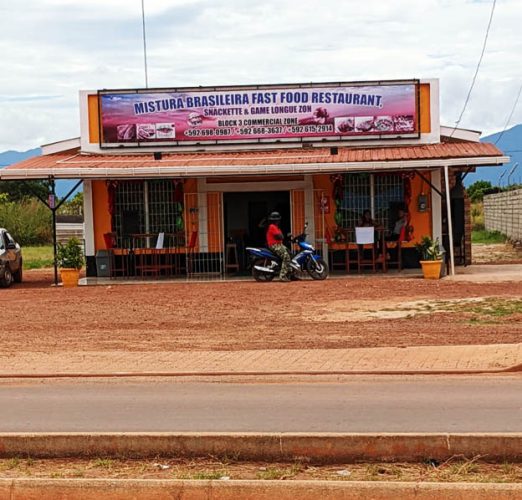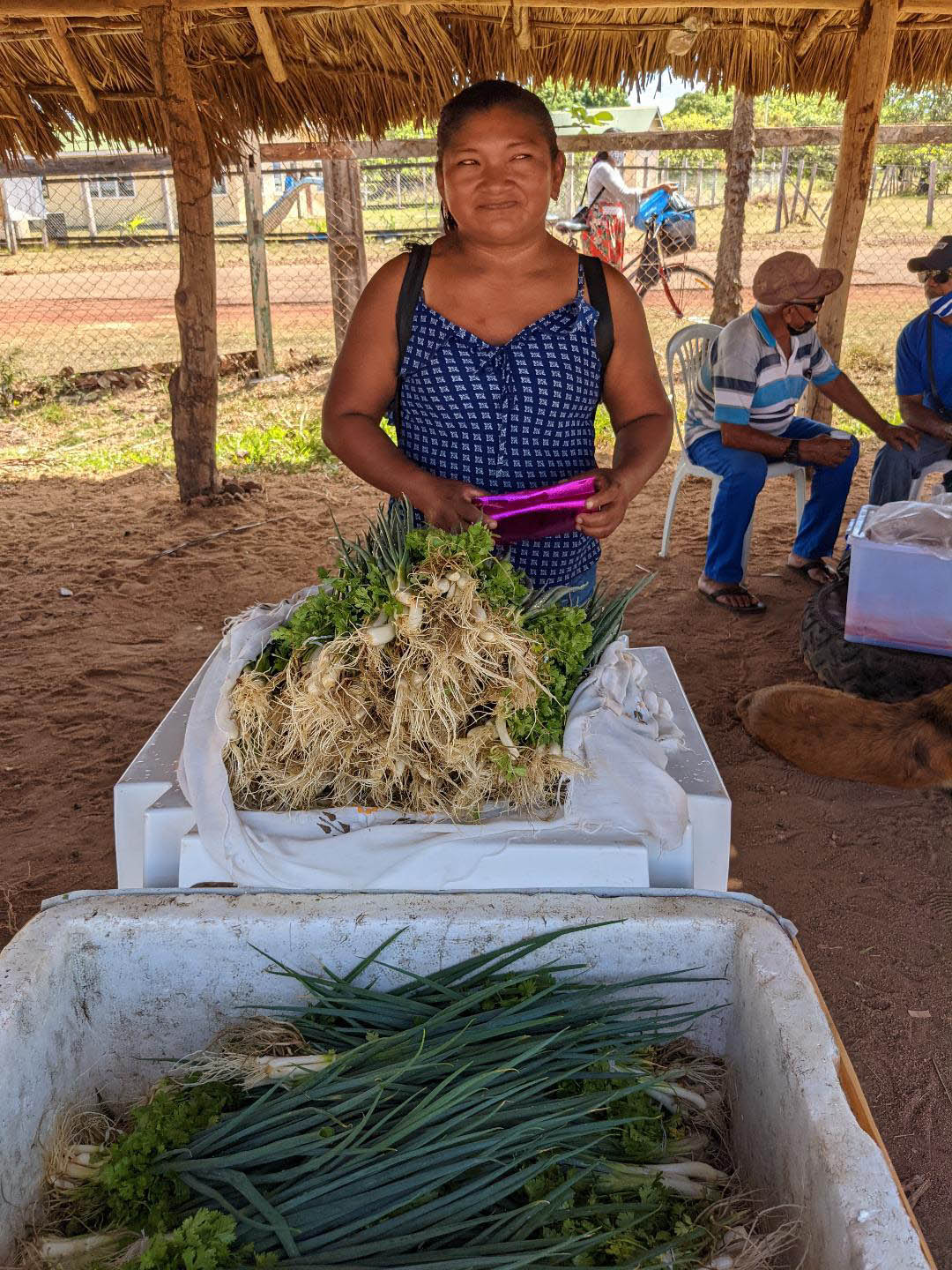The noises that have continually been made by successive political administrations in Guyana about moving development in the hinterland communities to a level where reasonably favourable comparisons can be made with at least some coastal communities, have long been drowned out by their echoes. Lethem, with its twenty four-hour electricity, its telephone service and a fairly robust commercial culture, does not typify the kind of abject poverty and backwardness that applies in most of the various other hinterland communities. Even at Lethem, however, there is unmistakable evidence that when it comes to meaningfully raising the standard of living in hinterland communities as a whole, there are still mountains left to be climbed.
The extent of the dependence of Lethem – and its various satellite communities – on interaction with Brazil and with Brazilians crossing the border to engage in mostly commercial pursuits is not a concern that can be easily dismissed from the main currents of the prevailing socio-economic equation. During the Stabroek News’ interview with Rupununi Chamber of Commerce President Daniel Gajie, he told us that the closure of the border with Brazil in the wake of the COVID-19 pandemic and the attendant drastic reduction in the number of Brazilians crossing to shop (at the mostly Brazilian and Chinese stores) at Lethem resulted in more than three hundred Guyanese employed in those stores losing their jobs. This, in effect, is a manifestation of the extent of Lethem’s dependence on Brazilian and Chinese enterprises to satisfy some of their basic needs.

As purely a matter of sovereignty, the entrepreneurial marginalisation of Guyanese in their own country is not a condition that we can ignore ad nauseam. It is government, in the first instance, that must take the initiatives that will balance the scales.
The Rupununi Chamber President confirms that Guyanese businesses at Lethem are rowing against the tide of the Brazilian and Chinese ‘invasion’, the latter group focussed fixedly on a ‘business model’ that thrives on plugging every conceivable demand gap that exists in a trading space. Of the Brazilian shoppers who travel to Lethem with monotonous regularity Gajie says “without them we will probably have no commerce.” This pronouncement is a pointed comment on the extent of spending by Brazilians at Lethem, which increased further following the July 2009 opening of the Takutu Bridge – Ponte do Rio Tacutu as the Brazilians call it – that links Lethem to the border town of Bonfim. It is, as well, a comment on the failure of coastal Guyana to provide cost-effective support for the efforts of local businessmen to create a robust local commercial culture of their own at Lethem.
In the indigenous ‘catchment’ communities, Gajie notes, the steady increase in the numbers of Brazilian and Chinese consumer goods outlets at Lethem has been accompanied by the emergence of small ‘mom and pop’ type businesses in those communities. Their market comprises, in large measure, farming families among others, who sell their produce to merchants who travel from far-flung communities to purchase peanuts, among other commodities. Some of the peanut farmers complain of unfair trading practices perpetrated by some coastal traders.
Time was when hundreds of Brazilians would cross the Takutu Bridge every day to do their shopping at Lethem. The advent of the coronavirus pandemic has reduced those numbers considerably. Still, weekends see an increase in crossings from the Brazilian side and an attendant spike in commercial activity at Lethem.
An elaborate-looking complex, housing what two years ago, had been ‘sold’ to the community as an Industrial Site Complex, catches the eye. Almost exactly two years after the then visiting Prime Minister, Moses Nagamootoo, had been reported as saying that the Complex was a precursor to the creation of an environment in which Lethem would be able to manufacture and market its own products. None of this has as yet materialised up to this time. The incomplete facility remains, at least for now, a monument to another yet-to-be- fulfilled official promise.
The Rupununi Chamber president appeared ‘none the wiser’ regarding plans for the future of the Complex. When asked about the feasibility of establishing a manufacturing ‘beachhead’ at Lethem, his response is equivocal. That, he says, would mean bringing manufacturing companies to Lethem … and he has serious doubts as to whether the prospects for doing so are good. Gajie favours a development that is grounded in the realities and resources that are indigenous to the Rupununi. Moreover, he contends that no plan for the creation of a full-scale manufacturing hub in the Rupununi, taking account of logistics, not least, the unreliability and prohibitively high cost of the movement of people and cargo between the coast and the interior, is likely to be easy to implement. What he recommends is the creation of a strong agriculture infrastructure that allows for expansive investment in cattle, and fruit and vegetable cultivation which, making allowance for serious state investment in the strengths of the region, would be a good ‘fit’ for Lethem and its satellite communities.
The Rupununi comprises five sub-districts – Deep South, South Pakaraimas, South Central, North Rupununi, and Central Rupununi, which, for the most part, is Lethem. Gajie explains that it is not as though the Rupununi is a ‘no hope’ part of the country. Some of the communities in the Rupununi have nursery and primary schools as well as health outposts. There are secondary schools at St Ignatius, Sand Creek, and Aishalton.
Still, in many respects, these are largely underserved, ‘marginalised’ communities, a manifestation of an omission on the part of the country’s coastal administration, over the decades, to respond to some of their critical needs. Even now, what are being promoted as ‘catchup’ initiatives do not appear, in many instances, to go ‘to the heart’ of the needs of these ‘forgotten’ communities.
The advent of the Takutu Bridge has resulted in a ‘fuzziness’ of the border between Guyana and Brazil. Increasingly larger numbers of Brazilians reportedly come to Lethem to celebrate holidays, including, it is said, some of their own national holidays. By pontoon, it is a matter of a brief, uneventful ride across the Takutu River. The bridge has facilitated the arrival of fleets of vehicles pushing the numbers of Brazilian visitors up by several dozens… daily. Once the bridge was officially opened the ‘floodgate’ opened even wider. So too – at least by 2010 – first, Chinese then Brazilian merchants began to descend on Lethem in droves.
Part three of this story will be published in the December 10 issue of the Stabroek Business






